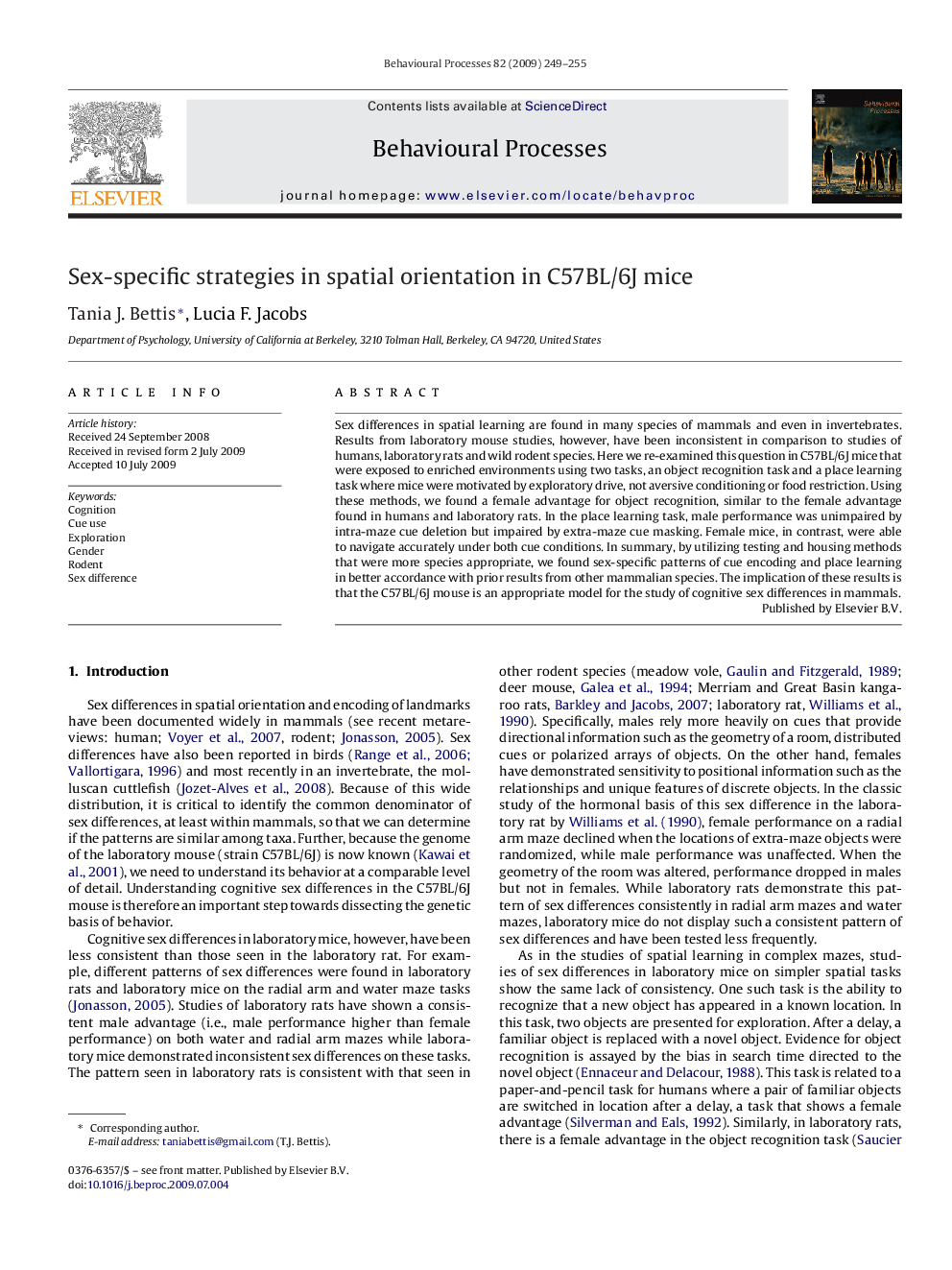| Article ID | Journal | Published Year | Pages | File Type |
|---|---|---|---|---|
| 2427394 | Behavioural Processes | 2009 | 7 Pages |
Sex differences in spatial learning are found in many species of mammals and even in invertebrates. Results from laboratory mouse studies, however, have been inconsistent in comparison to studies of humans, laboratory rats and wild rodent species. Here we re-examined this question in C57BL/6J mice that were exposed to enriched environments using two tasks, an object recognition task and a place learning task where mice were motivated by exploratory drive, not aversive conditioning or food restriction. Using these methods, we found a female advantage for object recognition, similar to the female advantage found in humans and laboratory rats. In the place learning task, male performance was unimpaired by intra-maze cue deletion but impaired by extra-maze cue masking. Female mice, in contrast, were able to navigate accurately under both cue conditions. In summary, by utilizing testing and housing methods that were more species appropriate, we found sex-specific patterns of cue encoding and place learning in better accordance with prior results from other mammalian species. The implication of these results is that the C57BL/6J mouse is an appropriate model for the study of cognitive sex differences in mammals.
